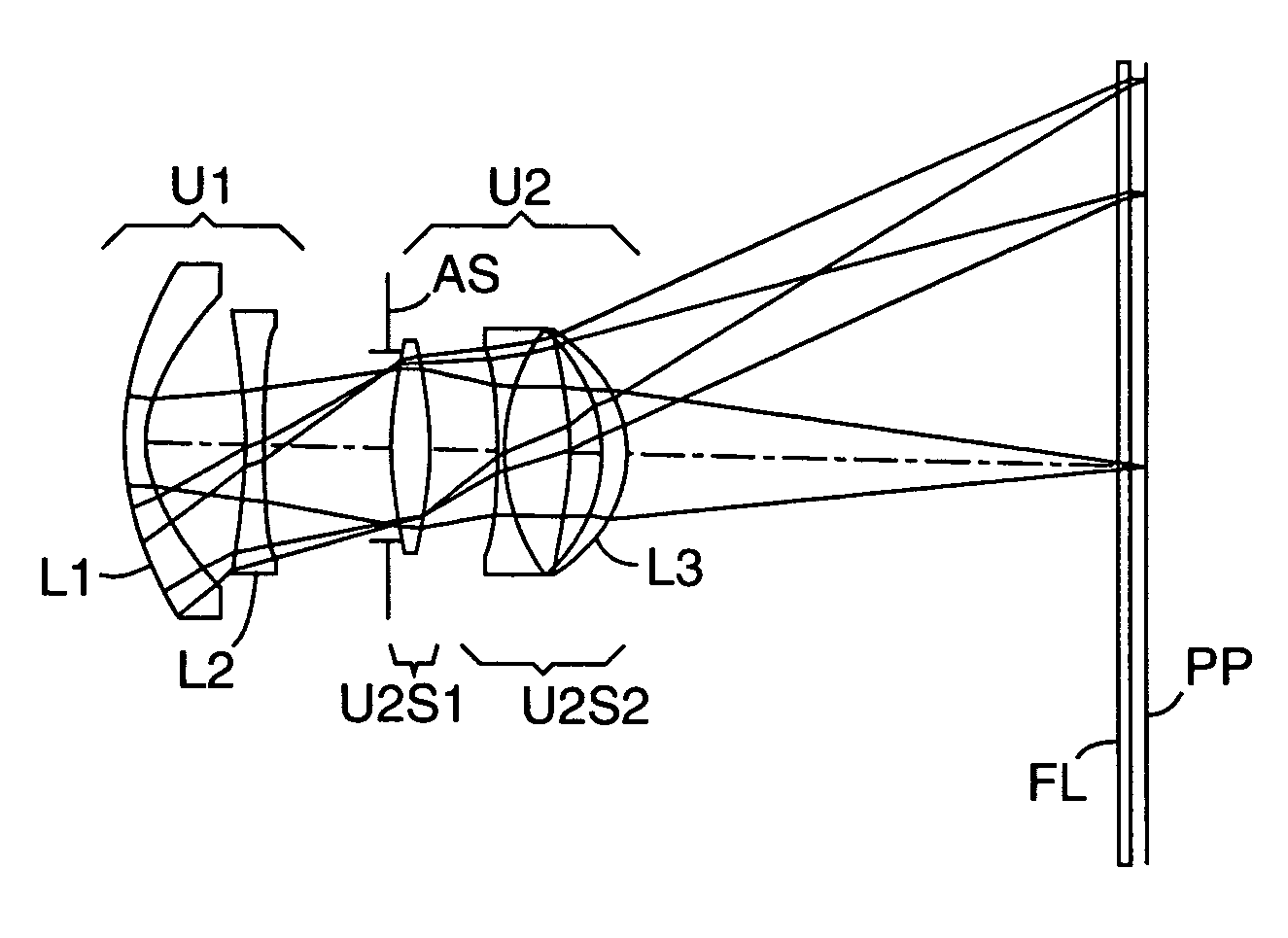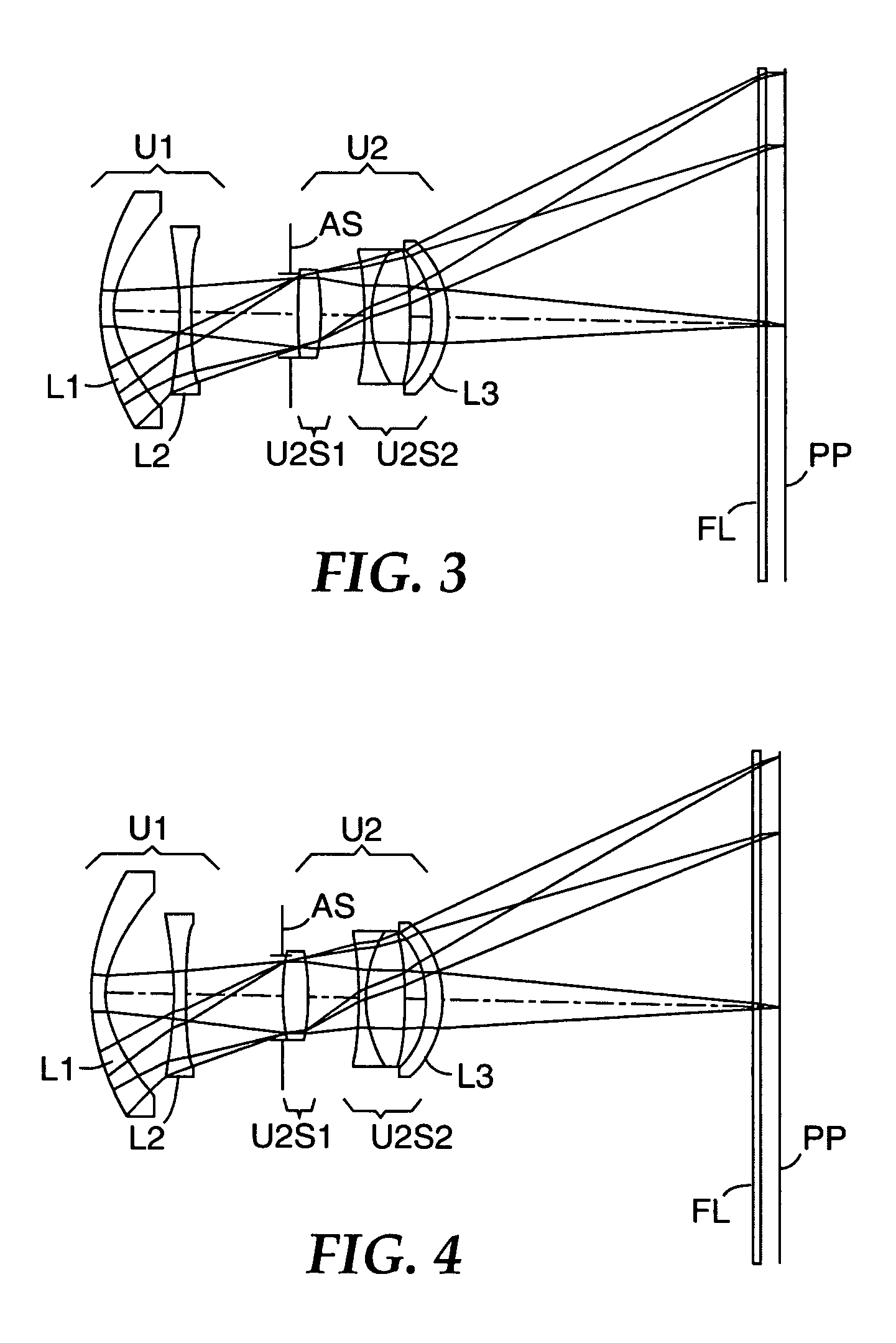Color-corrected projection lenses for use with pixelized panels
a projection lens and color correction technology, applied in the field of projection lenses, can solve the problems of lateral color, i.e., the variation of magnification with color, and the inability to perform accommodation, and achieve the effect of not being able to achieve smooth adjustment of size across the full field of view
- Summary
- Abstract
- Description
- Claims
- Application Information
AI Technical Summary
Problems solved by technology
Method used
Image
Examples
examples
[0090]FIGS. 1–13 and Tables 1–13 illustrate representative retrofocus lenses constructed in accordance with the invention. The lenses of Examples 11–13 were designed for use with pixelized panels having diagonals of 15 inches (380 mm), those of Examples 9–10 for panel diagonals of 13 inches (330 mm), those of Examples 2–4 for panel diagonals of 10 inches (250 mm), and the remainder for use with smaller panels.
[0091]OHARA designations are used in the prescriptions of Tables 1–13 for the various glasses employed in the lens systems. Equivalent glasses made by other manufacturers (e.g., HOYA or SCHOTT) can be used in the practice of the invention. Industry acceptable materials are used for the plastic elements. The designation NAS refers to a 70:30 copolymer of polystyrene and acrylic.
[0092]The aspheric coefficients set forth in the tables are for use in the following equation: z=cy21+[1-(1+k)c2y2]1 / 2+Dy4+Ey6+Fy8+Gy10+Hy12+Iy14
where z is the surface sag at a distance y from the opt...
PUM
 Login to View More
Login to View More Abstract
Description
Claims
Application Information
 Login to View More
Login to View More - R&D
- Intellectual Property
- Life Sciences
- Materials
- Tech Scout
- Unparalleled Data Quality
- Higher Quality Content
- 60% Fewer Hallucinations
Browse by: Latest US Patents, China's latest patents, Technical Efficacy Thesaurus, Application Domain, Technology Topic, Popular Technical Reports.
© 2025 PatSnap. All rights reserved.Legal|Privacy policy|Modern Slavery Act Transparency Statement|Sitemap|About US| Contact US: help@patsnap.com



